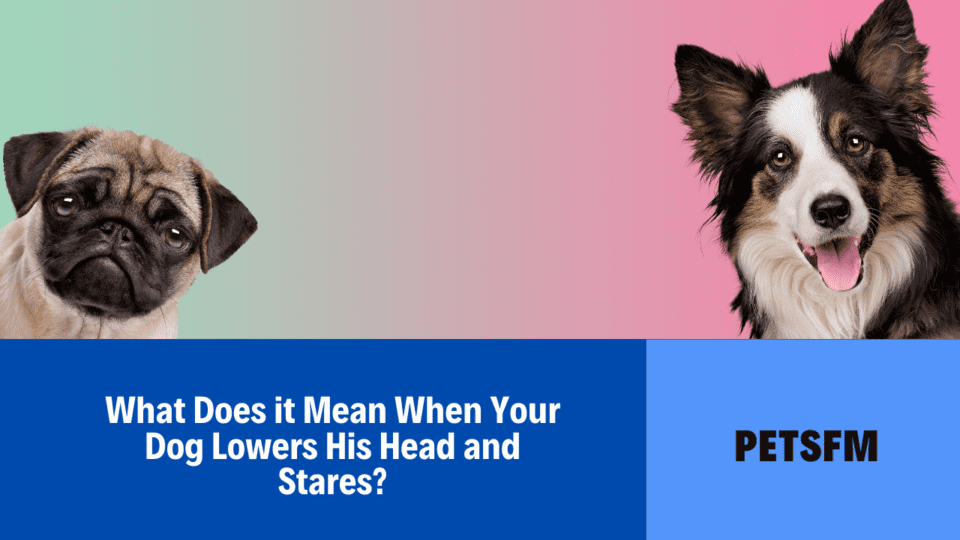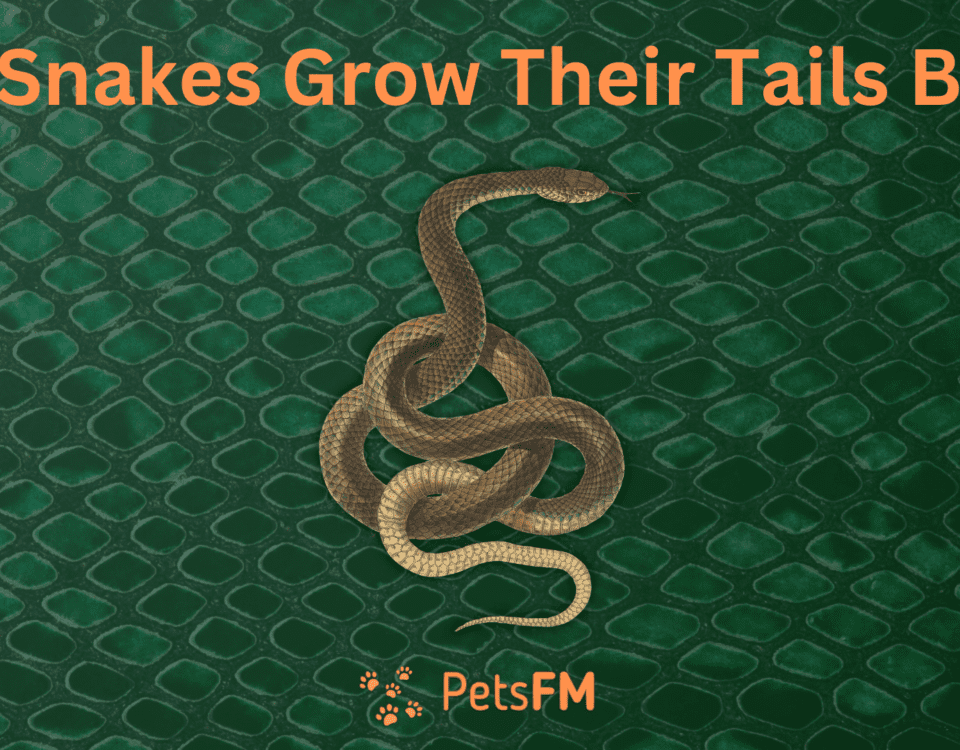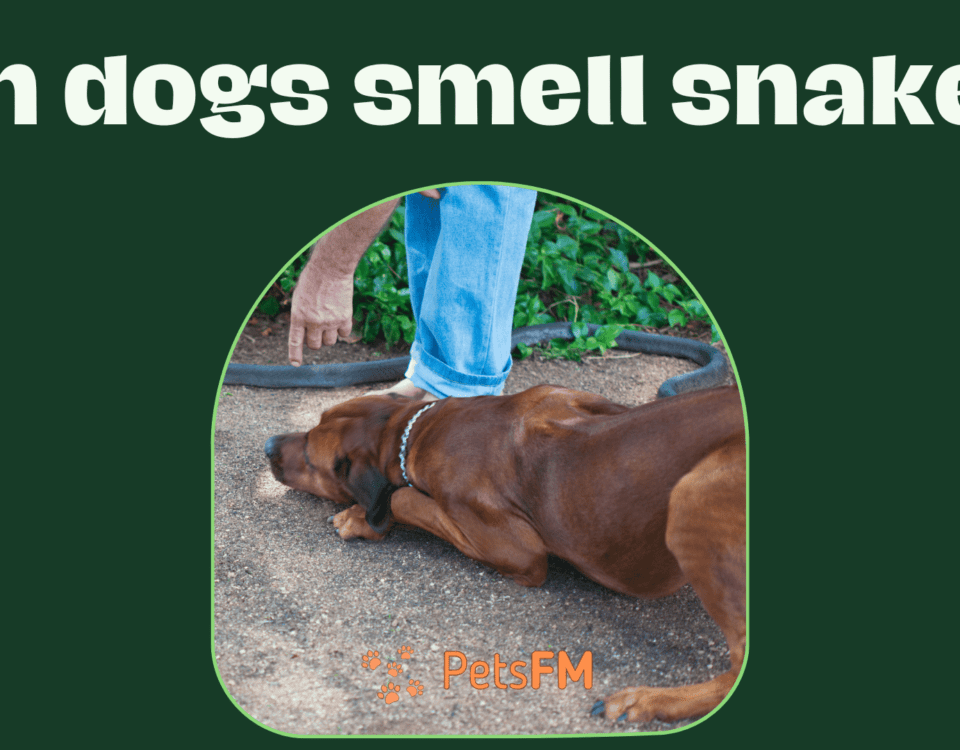


Mourning Dove Spiritual Meaning (+Dreams, Spirit, Power & Totem)
January 3, 2024


Mourning Dove – Nesting, Feeding, Mating Habits etc.
January 3, 2024Facial expressions and body language are powerful communicators; for instance, when someone gazes at you intently, it can evoke irritation or confusion. Interestingly, your dog can trigger similar reactions. A typical behavior in dogs is lowering their head while maintaining a steady gaze towards you.
This canine behavior of lowering the head and staring can signify various emotions or needs. It might indicate fear or a way for your dog to express a desire for something, such as food, a toy, or your attention. Additionally, this body language might be a sign of aggression and dominance or a warm gesture of affection.
Sometimes, when a dog stares, it could be because they are perplexed, in pain, or need to go outside. Alternatively, it may mean they are observing your actions and behavior. Let’s learn more about this in the article below:
Why Does My Dog Lower His Head and Stares?
It’s straightforward to interpret the behavior of a dog that is energetically bouncing and licking with a wagging tail, but when your pet shrinks its body, lowers its head, and begins staring at you, it’s likely trying to communicate something important.
This type of behavior can have various underlying reasons, which we’ll explore further.
1: Your Dog Is Expressing Fear
Dogs, known for their playful nature and tendency to create a bit of chaos, often find themselves in trouble with their owners. If you notice your dog approaching you with its head lowered and eyes wide and bulging, it could indicate fear of your reaction to their mischievous actions.
This posture is often called an “apologetic bow,” resembling a way for your dog to express remorse for misbehavior.


Dog in Discomfort
Veterinarians suggest that dogs don’t actually experience emotions like guilt or shame. However, having coexisted with humans for thousands of years, they’ve understood when their actions might lead to their owner’s displeasure.
As a result, they often adopt an expression that humans might interpret as guilt or shame, even though it’s not an emotion they inherently feel.
2: Your Dog Wants Something From You
When your dog maintains prolonged eye contact with you, paying attention is essential! This extended staring is a significant form of communication, indicating that your dog is likely seeking something from you.
They might be eager for an outdoor adventure like a walk or hoping for a playful round with a ball or frisbee. Perhaps they’re yearning for some affectionate cuddling or a gentle forehead rub. It’s also possible that your canine is hungry and hinting at a desire for their favorite snack by looking your way.
Training dogs often involves rewarding them with delicious treats for their good behavior. As a result, some dogs get used to this routine and, after completing a specific task, will stand before you with a focused, expectant gaze as if to request their well-earned treat.
3: Your Dog Is Showing Its Dominant
Eye contact with a dog isn’t always associated with positive intentions; it can sometimes indicate dominance or aggression. Due to their ancestral ties to wolves, a dog’s stare can be interpreted as hostile or threatening.
Imagine you’re sitting in a park, and a stray dog gives you a hard, unblinking stare with its head lowered, body stiff, tail still, and lips raised. This posture can signal a potential attack, displaying aggression and dominance.
In such cases, stepping back and avoiding making eye contact with the dog is advisable. Dominant and aggressive dogs can pose a risk not only to adults but also to children.
Even family dogs might exhibit violent behavior when they feel uncomfortable, threatened, or confused or if they are guarding something like a bone. In these situations, they might attempt to bite you, your children, or guests.
Therefore, educating your family and guests about your dog’s behavior and body language is vital to prevent unfortunate incidents.
4: Your Dog Wants Your Attention
During a busy weekend, when you are unable to spend adequate time playing or cuddling with your dog, they might feel neglected. In response, your dog may lower its head and look at you with a forlorn expression, likely signaling a desire for your attention. Your dog values your attention and praise greatly.
This behavior of seeking attention often arises from boredom, especially if your dog has been left alone at home without sufficient playtime or exercise.


Dog Wanting Attention
These activities are crucial for their mental stimulation. As a responsible pet owner, you must allocate quality time for your furry companion to address their behavioral needs without increasing stress.
5: The Dog is Trying To Understand Your Body Langauge
As pet owners, we often think we’re closely monitoring our pets, but our dogs are also intently observing us. They watch us to decode our body language, which helps them anticipate upcoming actions.
For instance, if you pick up your pet’s favorite toy ball before heading out, your dog might lower its chin and give you an excited, mischievous look. This behavior is their way of expressing eagerness to join you for some outdoor play and fun. They attentively wait for your next move, signaling their readiness.
Similarly, your dog may interpret other cues, like bowing their head at dinner time or getting excited when you hold a leash, as a sign of an impending walk. They also watch for symptoms like heading towards the car, which might indicate a trip or picnic, and understand these signals from your body language.
6: Your Dog Is Showing Affection Toward You
When your dog persistently gazes at you with a soft expression and lowers its head, it’s a sign of deep affection. This behavior is their way of expressing strong attachment and closeness to you.
Recent studies have shown that prolonged eye contact between owners and their pets triggers the release of oxytocin, often called the “love hormone.”
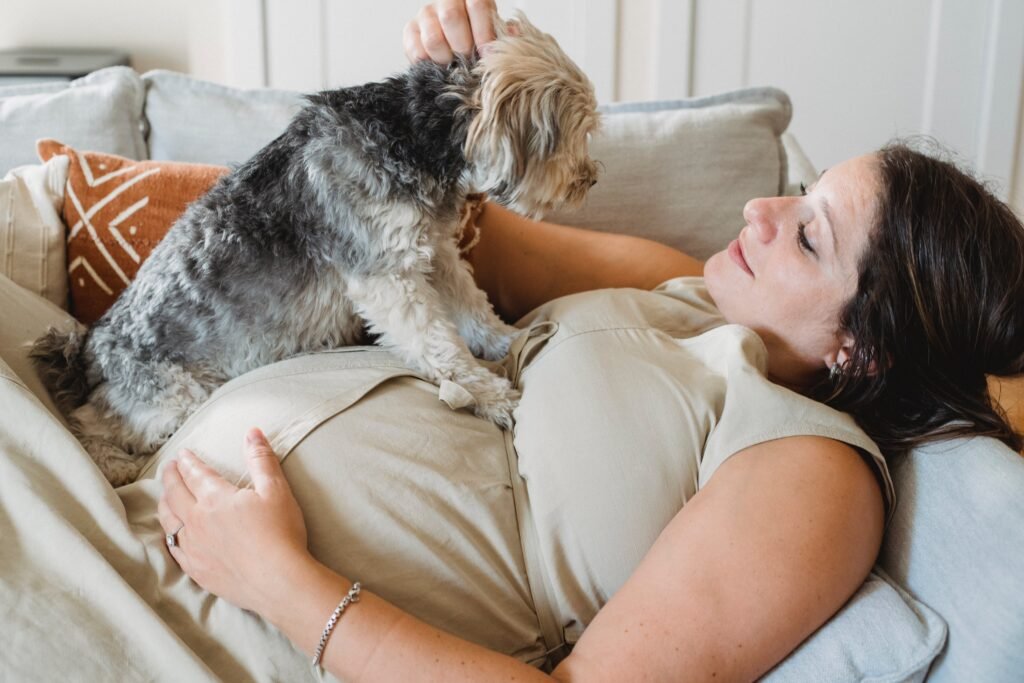

This release enhances feelings of love and trust mutually. Veterinarians note that this hormone’s effect is akin to the bond felt when a mother shares a loving gaze with her young child.
Why does my dog keep putting its puppy in the mouth? 8 Reasons
7: Your Dog Is Confused Or Disoriented
Your dog’s behavior of lowering its head while keeping its eyes still doesn’t always indicate anger or affection. Sometimes, it might indicate that your dog is experiencing severe mental confusion or disorientation, leading to this head-bowing response.
During training sessions, many dogs become frustrated and lower their heads if they struggle with hearing or vision issues or are not receiving explicit instructions from their trainer.
As owners, we can inadvertently contribute to our dogs’ confusion in our homes. This can prompt them to stare at us in bewilderment.
Such confusion can arise from using inconsistent names, not establishing clear household rules, giving disproportionate attention to another pet, reprimanding them without cause, or pushing a shy dog to interact with other dogs. These situations can lead to a state of perplexity in our canine companions.
8: Your Dog Has Some Pain Or Discomfort
If you observe your dog consistently lowering its head over several days without an apparent reason, it could be experiencing neck pain. Often, neck pain symptoms are subtle.
But, since your dog can’t verbally express its discomfort, it might lower its neck repeatedly and look at you while making a growling sound. This behavior is their way of drawing attention to their discomfort.
You might also notice your dog making eye contact during bathroom breaks. Contrary to what new pet owners might think, this isn’t a request for privacy.


Instead, it’s the opposite: your dog wants your presence because they feel vulnerable while going to the bathroom. In their pooping position, dogs can feel exposed and may lower their head and keep an eye on you, seeking your protection and support in what they perceive as a potentially unsafe moment.
Recognizing Stress Signals in Dogs
Recognizing stress signals in dogs is crucial for any pet owner. Stress in dogs often manifests through body language cues such as excessive yawning, licking lips, panting, avoiding eye contact, and tucking their tail.
A lowered head and averted gaze can also indicate anxiety or discomfort. Being attuned to these signs allows you to address your pet’s needs more effectively, whether it means removing them from a stressful situation, providing comfort, or seeking professional advice.
Understanding and responding to these stress signals not only improves the wellbeing of your dog but also strengthens the bond between you and your pet
Must Read: Do male dogs mate with their mother when they reach puberty?
How Can You Stop Your Dog From Staring Excessively?
To address excessive staring from your dog, it’s essential to understand and respond to the underlying causes. Here are some steps you can take:
- Identify the Reason: Observe the context of the staring. Is your dog hungry, bored, seeking attention, or responding to something in the environment? Understanding why your dog is staring is critical to addressing the behavior.
- Meet Their Needs: Ensure your dog’s basic needs are met – this includes regular feeding, sufficient exercise, playtime, and affection. If your dog is staring because it needs something, fulfilling that can reduce the behavior.
- Training and Commands: Teach your dog commands like “look” or “watch me” to control when and how long they stare. Use positive reinforcement to reward them for breaking their stare when asked.
- Provide Mental Stimulation: Keep your dog mentally stimulated with toys, puzzle feeders, and regular training sessions. Boredom can often lead to excessive staring.
- Regular Exercise: Ensure your dog gets enough physical exercise. A tired dog is less likely to engage in attention-seeking behaviors like excessive staring.
- Medical Check-Up: Consult a veterinarian if the staring is sudden and unusual. It could be a sign of a health issue that needs attention.
- Ignore the Behavior: If the staring is purely for attention and all other needs are met, try ignoring it. Sometimes, not rewarding the behavior with attention can reduce its frequency.
- Consistent Routine: Dogs thrive on routine. A predictable meal walks and playtime schedule can help reduce anxiety-related staring.
- Socialization and Interaction: Spend quality time with your dog, including petting, playing, and training. A well-socialized dog is often more secure and less likely to seek constant attention.
- Professional Help: If the problem persists or you’re unsure how to handle it, consider consulting a professional dog trainer or behaviorist for personalized advice.
Also., Read: Do’s and Don’ts of Scruffing Your Dog: A Comprehensive Guide
Why does my dog bow his head when I pet him?
When your dog lowers its head as you pet it, this often indicates trust and submission. It’s a sign they feel comfortable and secure in your presence, showing respect and affection towards you as their owner.
What signifies a dog keeping its head lowered?
A dog hanging its head low could indicate various emotions, such as feeling unwell, submissive, scared, or even neck pain. Considering the context and other body language cues is essential to interpret this behavior accurately.
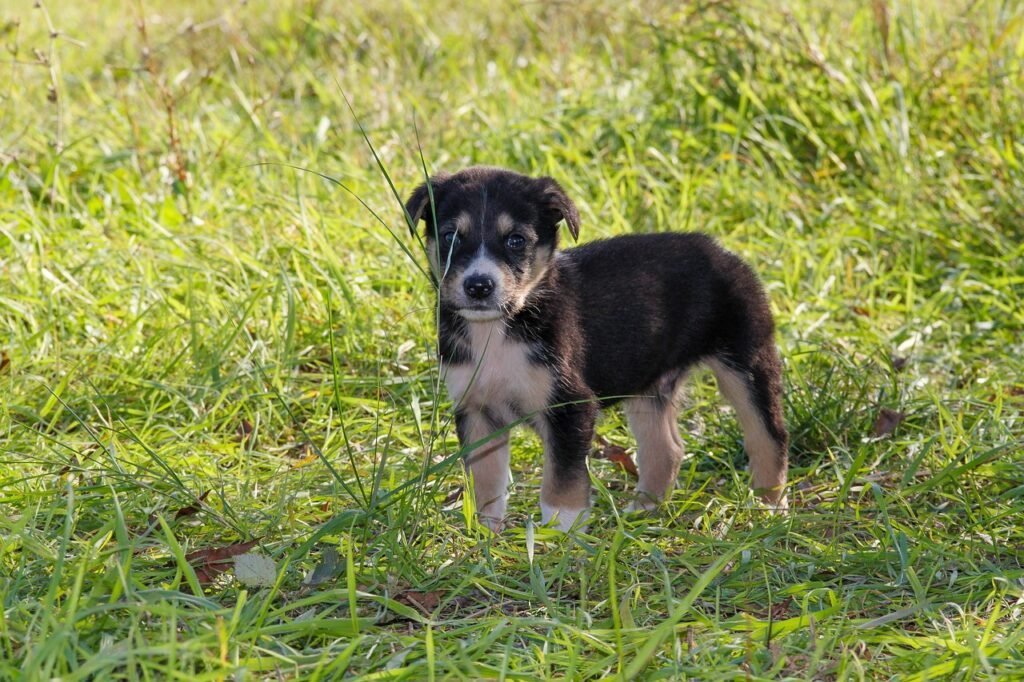

How can I understand the reason behind my dog’s staring?
Observe their body language and the situation to decipher why your dog is staring. Reasons can range from seeking attention, wanting food, feeling anxious, or needing to go outside. Each scenario typically has accompanying signs to look out for.
Is maintaining eye contact with a dog harmful?
Direct eye contact can be perceived as a challenge or threat by a dog, especially from strangers or in tense situations. It’s generally advisable to avoid intense staring, as it can make dogs uncomfortable or provoke aggression.
Final Thoughts
It’s quite amusing to notice that your dog seems to have a constant watchful eye on you, whether you’re watching TV, brushing your teeth, or enjoying a meal. As a pet owner, it’s beneficial to understand the potential reasons behind this frequent staring.
When your dog lowers its head and looks at you, it could signal various things. Perhaps it’s mealtime, and they’re hungry, or they might feel remorseful for a misdeed. In some cases, this posture might indicate dominant or aggressive behavior.
Understanding this regular gaze can be incredibly insightful for owners, helping them to better comprehend their pet’s needs and behaviors in different situations.
